house of the dragon season 2 parents guide
- by laurianne

This guide provides essential insights for parents to navigate the mature themes, graphic content, and complex scenes in Season 2, ensuring informed decisions about suitability for children.
Overview of the Series and Its Mature Themes
House of the Dragon Season 2 delves into the intense power struggles within the Targaryen dynasty, exploring themes of betrayal, political intrigue, and complex moral dilemmas. The series features graphic violence, strong sexual content, and explicit language, making it unsuitable for younger audiences. Parents should be aware of the mature themes, including suicide, nudity, and disturbing scenes, which are central to the storyline. This guide helps parents understand the content to make informed decisions about their child’s viewing experience.
Importance of a Parents Guide for Mature Content
A parents guide is crucial for understanding the mature content in House of the Dragon Season 2, helping parents make informed decisions about their child’s viewing experience. This guide provides detailed insights into the series’ graphic violence, explicit sexual content, strong language, and disturbing themes. It highlights specific episodes with triggering content, such as suicide and intense violence, allowing parents to assess suitability. By offering a clear breakdown of mature themes, the guide enables responsible media consumption and fosters open conversations about the content’s impact on young viewers.

Age Ratings and Content Warnings
House of the Dragon Season 2 is rated TV-MA for graphic violence, strong sexual content, nudity, cursing, and disturbing themes. Episodes vary, with some rated 18 or 16.
TV-MA Rating Explained
The TV-MA rating signifies content intended for mature audiences only. This includes graphic violence, strong sexual content, nudity, frequent profanity, and themes that may distress younger viewers. The rating serves as a warning to parents about the show’s unsuitability for children, emphasizing the need for discretion and guidance when deciding if the series is appropriate for minors. This designation aligns with the series’ complex and intense nature, ensuring viewers are aware of the mature subject matter beforehand.
Episode-Specific Ratings: What Parents Need to Know
Each episode of House of the Dragon Season 2 carries specific ratings and warnings. Episode 1 is rated 18 for disturbing content, offensive language, sex scenes, and violence. Episode 2 is rated 16, noting themes of suicide, violence, and disturbing content. Episode 3, titled The Burning Mill, is self-rated 18 for explicit sex scenes, nudity, and graphic violence. These episode-specific ratings highlight varying levels of maturity, allowing parents to assess content suitability for their children. The warnings emphasize the need for careful consideration before allowing younger viewers to watch certain episodes. Parents should review these details to make informed decisions about their child’s viewing experience. The ratings and warnings provide clear guidance on the nature of each episode’s content, ensuring parents are aware of potential sensitivities and themes that may require discussion or restriction.
Content Warnings: Disturbing Content, Offensive Language, and More
House of the Dragon Season 2 contains content that may disturb some viewers, including graphic violence, explicit sex scenes, and offensive language. Episodes often feature mature themes, such as suicide and betrayal, which can be emotionally intense for young audiences. Strong language, including frequent use of profanity, is prevalent throughout the series. Parents should be aware of scenes depicting alcohol consumption and mild drug references. The series also includes nudity and intense action sequences that may not be suitable for all ages. These warnings highlight the need for parental discretion when deciding if the show is appropriate for younger viewers.

Violence and Gore in Season 2
House of the Dragon Season 2 features extensive graphic violence, with frequent intense action sequences and gory scenes that may be deeply unsettling for younger viewers.
Graphic Violence: Extent and Frequency
Season 2 of House of the Dragon features frequent and prolonged graphic violence, including brutal fight scenes, gory injuries, and intense battle sequences. The violence is often explicit, with scenes depicting mutilation, dismemberment, and bloody wounds. Certain episodes, such as Episode 3, contain particularly disturbing content, including fiery attacks and gruesome deaths. The sheer intensity and frequency of these scenes may be overwhelming for younger or sensitive viewers. Parents should be aware that the violence is not only prevalent but also deeply unsettling, making it essential to assess their child’s ability to handle such content.
Gore and Intense Scenes: Impact on Young Viewers
The graphic gore and intense scenes in House of the Dragon Season 2 can have a profound impact on young viewers. The vivid depiction of bloody wounds, dismemberment, and violent acts may evoke strong emotional reactions, including anxiety or fear. Scenes involving fire, mutilation, and brutal killings are particularly distressing and could lead to nightmares or a heightened sense of unease. Parents should consider their child’s sensitivity and maturity level before exposing them to such content, as prolonged exposure to gore can desensitize or traumatize impressionable young minds.
Specific Episodes with High Violence Content
Certain episodes in House of the Dragon Season 2 are marked by heightened violence, making them particularly concerning for young viewers. Episode 3, titled The Burning Mill, features intense fire-related violence and graphic deaths. Episode 2 includes a suicide scene and brutal combat, while Episode 4 depicts strategic yet savage battles. These episodes contain prolonged sequences of bloodshed and gore, which may be overwhelming for sensitive audiences. Parents are advised to preview these episodes to assess their suitability for their children, considering the potential for emotional distress or desensitization to violence.
Sexual Content and Nudity
House of the Dragon Season 2 contains explicit sex scenes, nudity, and simulated sexual acts, with frequent depictions that may not be suitable for younger audiences.
Explicit Sex Scenes and Nudity: Frequency and Context
House of the Dragon Season 2 features frequent explicit sex scenes and nudity, often depicted in detailed and mature contexts. These scenes are integral to character development and plot progression, exploring themes of power dynamics, relationships, and political intrigue. While the content is intended to reflect the show’s adult nature, parents should be aware that such scenes are graphic and occur regularly throughout the season. Episodes like “The Burning Mill” contain particularly explicit content, making it essential for parents to assess suitability for younger viewers. The show does not shy away from portraying these themes authentically, which may not align with all family viewing standards.
Simulated Sex Acts: What Parents Should Be Aware Of
House of the Dragon Season 2 includes scenes with simulated sex acts, which are often explicit and intended to convey adult themes. These scenes can be misleading in their realism, potentially confusing younger viewers. Parents should be cautious, as such content may not be suitable for children due to its mature nature and frequency. The show’s portrayal of these acts aligns with its TV-MA rating, emphasizing the need for parental discretion. Understanding the context and frequency of these scenes is crucial for making informed decisions about children’s exposure to the series.
Episode-Specific Nudity and Sexual Content
Certain episodes in House of the Dragon Season 2 feature explicit nudity and sexual content, with Episode 3 (“The Burning Mill”) containing particularly graphic scenes. This episode is self-rated 18 by some platforms, highlighting its mature nature. Other episodes, such as Episode 1 and Episode 2, also include sexual content, with warnings for disturbing elements and explicit scenes. Parents should review episode-specific advisories to understand the extent of such content, as it varies across the season. This ensures informed decisions about suitability for younger viewers, given the show’s TV-MA rating and frequent adult themes.
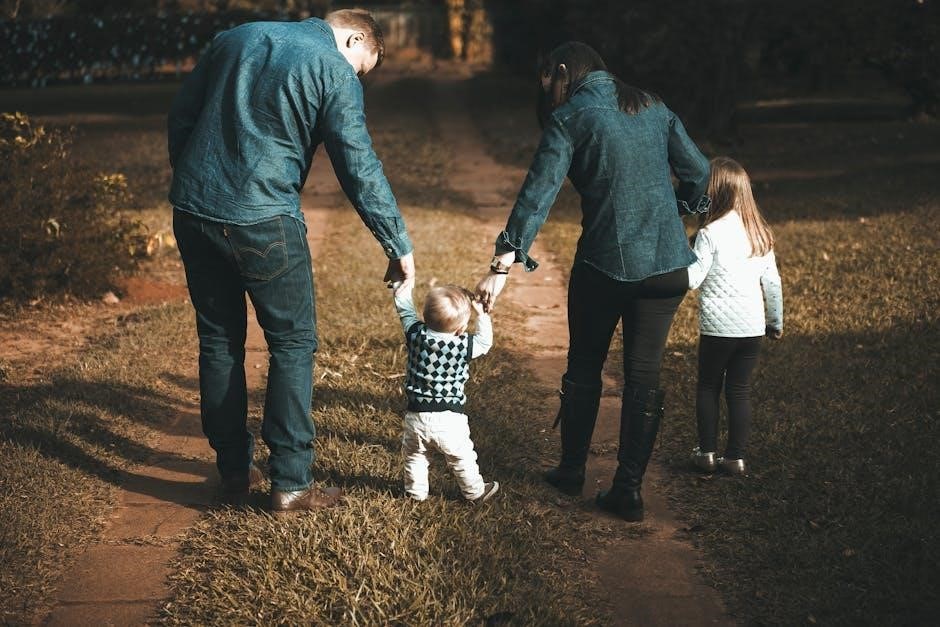
Language and Profanity
House of the Dragon Season 2 contains strong language, with frequent use of profanity, including explicit terms like “fuck,” contributing to its TV-MA rating and mature themes.
Strong Language: Frequency and Context
The series frequently features strong language, including explicit terms like “fuck,” which are used in intense or emotional scenes. This contributes to its mature rating and is a key concern for parents. The language often reflects the violent or political nature of its medieval setting. While such dialogue adds authenticity, it exposes young viewers to harsh verbal content. Parents should be cautious, as the language is not suitable for children and aligns with the show’s adult themes. This aspect, along with other mature elements, makes it essential for parents to monitor viewing.
Offensive Language: Impact on Young Audiences
House of the Dragon Season 2 contains frequent offensive language, including explicit terms like “fuck,” which may negatively impact young viewers. Such language can lead to mimicking behaviors or desensitization to harsh verbal content. Exposure to offensive language at a young age can influence emotional development and social interactions. Parents should consider the potential impact on their child’s sensitivity and values. The show’s mature themes and language emphasize the need for parental discretion to ensure children are prepared to contextualize such content appropriately. This aspect underscores the importance of monitoring and discussing the series with younger audiences.
Specific Episodes with High Profanity
Certain episodes in House of the Dragon Season 2 feature notably high levels of offensive language, particularly Episodes 1 and 2. Episode 1 includes frequent strong profanity, while Episode 2 escalates with more intense verbal exchanges. The language is often used to convey characters’ emotions or conflicts, but it may be inappropriate for younger audiences. Parents should be aware of these episodes’ language content to decide if they are suitable for their children. Such episodes highlight the need for guidance and open conversations about the impact of language on young viewers.
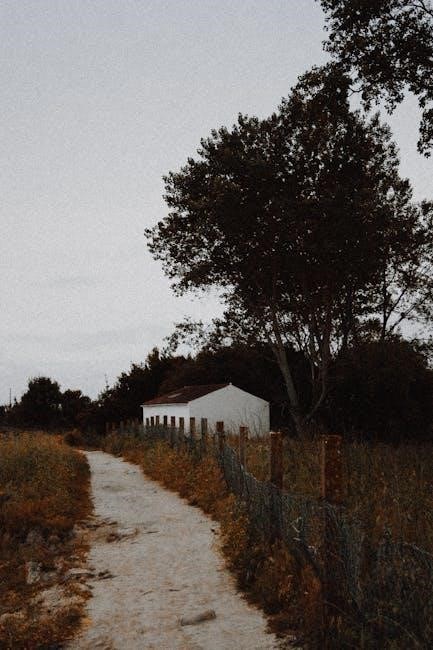
Alcohol, Drugs, and Smoking
The series depicts drinking in social and strategic contexts, with mild drug references. Smoking is present but not emphasized, reflecting the show’s mature, historically-inspired setting.
Depiction of Drinking: Frequency and Context
Drinking is frequent in Season 2, often in social or political settings, reflecting the show’s medieval-inspired world. Alcohol use is portrayed as a common aspect of royal and noble life, sometimes tied to strategic decisions or emotional moments. While not excessively glorified, it is normalized within the narrative, offering context to the characters’ behaviors and cultural backdrop. Parents should be aware of its prevalence, especially in scenes involving negotiations, celebrations, or personal struggles, which may influence younger viewers’ perceptions of alcohol use.
Drug Use: Mild References and Their Impact
Drug use in Season 2 is not a central focus but occasionally appears in subtle references, often tied to the show’s political and high-stakes environment. These depictions are generally mild and not explicit, typically used to illustrate power dynamics or stress-induced behaviors. While not glorified, such scenes may still impact impressionable viewers, prompting discussions about substance use and its consequences. Parents should remain vigilant, as even minimal portrayals can influence perceptions, especially in a series known for its mature themes and complex storytelling.
Smoking: Presence and Relevance in the Series
Smoking in House of the Dragon Season 2 is minimal but occasionally present, often reflecting the show’s medieval setting and character traits. It is not glorified or emphasized, typically appearing in scenes to depict stress, power dynamics, or historical authenticity. While not a central focus, parents should be aware of these portrayals, as they may subtly influence young viewers’ perceptions. The series does not promote smoking, and its presence is generally low-key, fitting within the broader mature themes of the show.
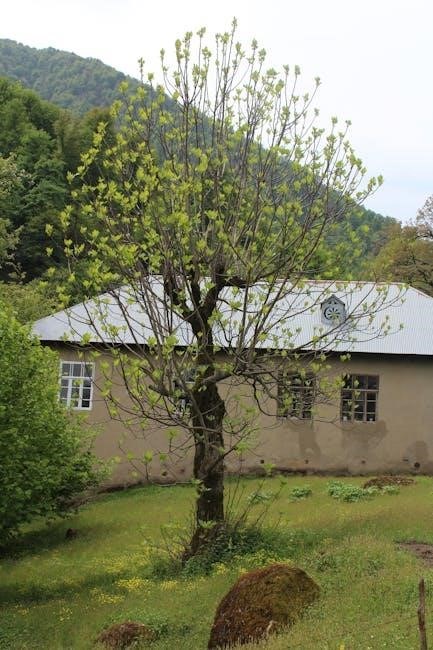
Frightening and Intense Scenes
House of the Dragon Season 2 contains emotionally charged and distressing scenes, including intense violence and psychological tension, which may unsettle young viewers due to their mature nature.
Severe Frightening Scenes: What Parents Should Know
Parents should be aware that House of the Dragon Season 2 includes severely distressing scenes, such as graphic violence, intense emotional conflicts, and sudden traumatic events. These moments can be deeply unsettling for young audiences due to their realistic portrayal and prolonged duration. Some episodes feature prolonged sequences of suspense and horror, which may leave lasting impressions on impressionable viewers. It’s crucial for parents to preview content or watch alongside their children to address any emotional responses and ensure the material is age-appropriate for their child’s sensitivity level.
Intense Moments: Emotional and Psychological Impact
House of the Dragon Season 2 features emotionally charged and psychologically intense scenes that can deeply affect young viewers. These moments often involve complex character dynamics, betrayals, and moral dilemmas, which may provoke strong emotional responses. The series explores themes of power struggles and personal loss, creating a heavy emotional burden. Parents should be mindful of how these scenes might influence their child’s mental state, as the dramatic tension and character conflicts can be overwhelming for sensitive audiences. Understanding the emotional weight of these moments is crucial for guiding young viewers.
Specific Episodes with Severe Intensity
Certain episodes in House of the Dragon Season 2 are marked by severe intensity, including Episode 3, titled The Burning Mill, which contains disturbing imagery and intense violence; Episode 2 also stands out with its portrayal of suicide and graphic content, while Episode 4 delves into themes of betrayal and strategic violence. These episodes are particularly impactful due to their emotional depth and visual intensity, making them critical points of concern for parents assessing the series’ suitability for their children.
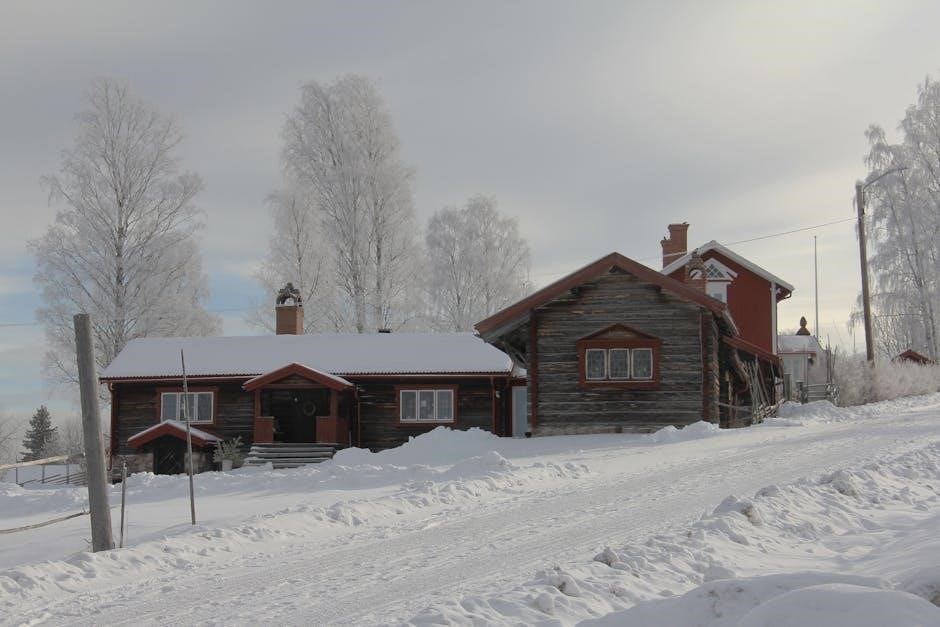
Episode-Specific Content Breakdown
This section provides a detailed look at each episode’s content, highlighting specific warnings and mature themes to help parents make informed decisions about viewing suitability.
Episode 1: Content Overview and Warnings
Episode 1 of House of the Dragon Season 2 is rated 18, containing mature themes, offensive language, and graphic violence; It includes disturbing content, explicit sex scenes, and intense action sequences. Parents should be cautious due to the high level of adult material, making it unsuitable for younger audiences. The episode sets a dark tone for the season, with violence and strong language prevalent throughout. Viewer discretion is advised, and parents are urged to review the content before allowing children to watch. This episode highlights the series’ mature nature, aligning with its TV-MA rating.
Episode 2: Suicide, Violence, and Disturbing Content
Episode 2 of House of the Dragon Season 2 is rated 16 and contains deeply unsettling themes, including a depiction of suicide, graphic violence, and offensive language. Parents are warned about the emotional intensity of these scenes, which may be triggering for young viewers. The episode also includes explicit sex scenes and violent confrontations, contributing to its mature rating. The disturbing content and complex emotional dynamics make it essential for parents to exercise discretion, as the material is not suitable for younger audiences. This episode underscores the series’ darker and more intense narrative direction.
Episode 3: Explicit Sex Scenes and Graphic Violence
Episode 3, titled The Burning Mill, is rated 18 for its mature content, including explicit sex scenes and graphic violence. The episode features intense and disturbing elements, such as nudity and simulated sex acts, which are central to the narrative. Viewers can expect prolonged sequences of violent confrontations and gory imagery, making it unsuitable for younger audiences. Parents are strongly advised to exercise caution, as the content is designed for mature viewers only. The episode’s dark and intense tone aligns with the series’ overall direction, emphasizing the need for parental discretion.
Episode 4: Themes of Betrayal and Strategic Violence
Episode 4 delves into themes of betrayal and strategic violence, showcasing the cunning and ruthless nature of the characters. The episode highlights intense political maneuvering and violent confrontations, with dragons playing a central role in the conflict. While it offers complex character development, the mature themes and strategic violence make it unsuitable for young viewers. Parents should be aware of the intricate power struggles and their potential impact on impressionable audiences. The episode’s focus on betrayal and calculated moves underscores the series’ darker and more mature tone, emphasizing the need for parental discretion.

Themes and Moral Complexity
Season 2 explores complex themes like power struggles, betrayal, and moral ambiguity, challenging viewers to question right and wrong amidst intricate character dynamics and intense conflicts.
Mature Themes: Power Struggles and Betrayal
House of the Dragon Season 2 delves deeply into themes of power, betrayal, and political intrigue, showcasing how characters navigate ruthless ambition and shifting alliances. The series highlights the moral complexities of pursuing power, often at the cost of trust and loyalty. These mature themes are central to the narrative, exploring the consequences of betrayal and the blurred lines between right and wrong. Parents should be aware that these themes may prompt discussions about ethics, loyalty, and the emotional toll of such conflicts, particularly for younger viewers who may struggle to grasp the nuances of these adult-driven storylines.
Moral Ambiguity: Impact on Young Viewers
The series often presents characters with no clear moral compass, engaging in morally questionable actions driven by power and survival. This moral ambiguity can be challenging for young viewers, as it blurs the lines between right and wrong. Parents should be cautious, as these themes may influence impressionable minds, potentially leading to confusion about ethical behavior. Open discussions about the motivations behind such actions can help young viewers understand the complexities and differentiate between fictional scenarios and real-life morality.
Complex Characters: Role Models and Their Flaws
House of the Dragon Season 2 features complex characters with deeply flawed personalities, making them questionable role models for young viewers. Many characters exhibit selfishness, manipulation, and a lack of empathy, driven by ambition and power struggles. While their depth adds to the show’s intrigue, it also poses challenges for impressionable audiences. Parents should guide children in understanding that these characters’ actions, though compelling, often reflect morally questionable choices. The series underscores that even flawed individuals can shape history, but it’s crucial for young viewers to distinguish between admirable traits and harmful behaviors.
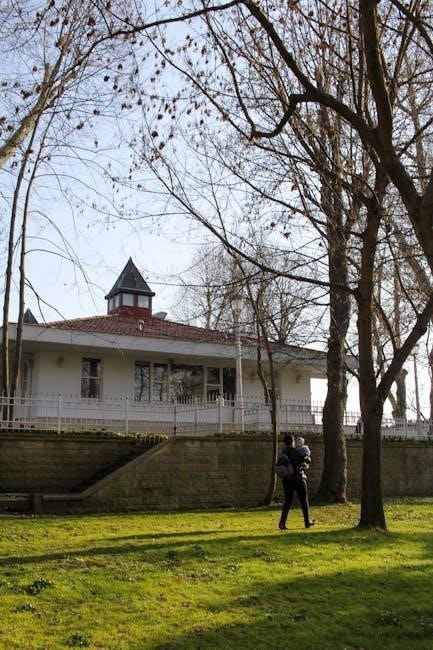
Guidance for Parents
This section offers practical advice for parents, helping them navigate the series’ mature content, ensure responsible viewing, and make informed decisions about their child’s media consumption.
Deciding If the Series Is Suitable for Your Child
House of the Dragon Season 2 is rated TV-MA, indicating mature content unsuitable for younger audiences. Parents should consider their child’s sensitivity to graphic violence, strong sexual content, nudity, and explicit language. The series explores complex themes like power struggles and betrayal, which may require open discussions. Assess your child’s maturity and ability to process intense scenes. Co-viewing is recommended to address any concerns and ensure the content aligns with your family’s values.
Strategies for Responsible Media Consumption
Encourage co-viewing to discuss mature themes and address concerns. Set clear boundaries and use parental controls to limit exposure. Foster open conversations about the content’s impact. Promote critical thinking by asking questions about the characters’ actions and motivations. Establish family media rules, including appropriate viewing hours. Encourage reflection on how the series aligns with your household’s values. Provide alternative, age-appropriate content for younger viewers. Stay informed through resources like Common Sense Media to make informed decisions.
Open Conversations: Discussing Mature Content with Kids
Engage your children in open, non-judgmental discussions about the show’s themes, ensuring they understand the difference between fiction and reality. Ask their thoughts on violent or sexual scenes to gauge their comprehension. Discuss the consequences of characters’ actions to promote empathy and moral awareness. Highlight positive traits like loyalty and courage while addressing negative behaviors. Use these conversations to reinforce your family’s values and encourage critical thinking about media. This helps children process complex content and develop a mature perspective. Open dialogue fosters trust and provides a safe space for questions and concerns.

Resources for Parents
Utilize platforms like Common Sense Media, BBFC, and official HBO guides for detailed episode breakdowns, age ratings, and expert advice to make informed viewing decisions.
Common Sense Media: Detailed Reviews and Age Ratings
Common Sense Media offers comprehensive reviews and age ratings for House of the Dragon Season 2, providing detailed breakdowns of violence, sex, and language. The platform highlights the severity of mature themes, such as graphic violence, strong sexual content, and frequent profanity. It also assesses the emotional and psychological impact of intense scenes on young viewers. Parents can rely on these insights to understand the suitability of the series for their children. The reviews emphasize the show’s TV-MA rating, ensuring parents are well-informed about its adult-oriented content.
BBFC Content Advisories: Episode-by-Episode Breakdowns
The British Board of Film Classification (BBFC) provides detailed content advisories for each episode of House of the Dragon Season 2. These breakdowns highlight specific concerns such as graphic violence, nudity, and strong language. For instance, Episode 2 is noted for themes of suicide and disturbing content, while Episode 3 includes explicit sex scenes and intense violence. The BBFC ratings offer parents a clear understanding of what to expect, helping them make informed decisions about their child’s viewing. These advisories are particularly useful for identifying episodes with potentially upsetting or mature material.
Additional Online Resources for Parents
Beyond official guides, parents can utilize online resources like Common Sense Media for detailed reviews and age ratings. The BBFC website offers episode-specific content advisories, while platforms like IMDb provide user-generated content warnings. Fan forums and community discussions often share personal insights, helping parents gauge suitability. Additionally, blogs and entertainment websites frequently publish in-depth analyses of mature themes, violence, and sexual content. These resources collectively empower parents to make informed decisions about their child’s viewing experience, ensuring they are aware of all potential concerns before allowing their children to watch House of the Dragon Season 2.
Related posts:
Is House of the Dragon Season 2 suitable for children? Find the parental guide, age ratings, and content warnings to help you decide.
Posted in United Kingdom